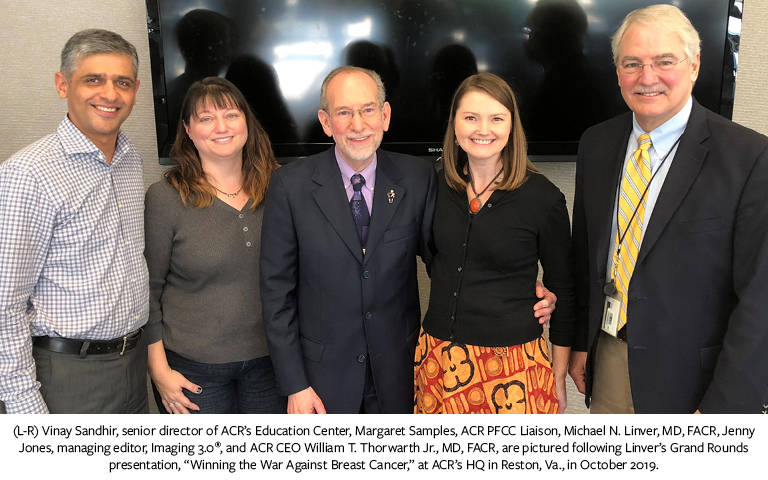In his 33-year career as a breast imager and educator, Michael N. Linver, MD, FACR, has been a strong proponent of mammography and has contributed his expertise to the development of local and national quality screening guidelines. Linver, clinical professor of radiology at the University of New Mexico, has also traveled across the world to present on quality mammography and the importance of patient-centered communication skills. Linver, who was recently named the 2020 recipient of the Gold Medal from the Society of Breast Imaging for his outstanding contributions to the field of breast imaging, spoke with the Bulletin about the future of AI in breast imaging, the importance of early screening, and his passion for teaching.
How can healthcare providers educate women about the benefits of early screenings?
The science shows clearly that screenings should begin at age 40, but there are several different organizations that issue their own recommendations. If the public thinks the experts can’t even agree, then women start to think it must not be a very good test — and many women don’t seek mammography for that reason.
The ACR offers resources for physicians to use in their own practices so they can convey accurate information to their patients (available at acr.org/breastimaging). Clearly, radiologists need to be advocates for their patients, but we should also be working with clinicians to empower women to be a voice for their own health and protection.
If the public thinks the experts can’t even agree, then women start to think it must not be a very good test — and many women don’t seek mammography for that reason.
Is AI well-suited to aid breast cancer screening and diagnosis?
AI will never replace a radiologist — there’s still an art to reading breast imaging. AI is still a modality in evolution. It’s not standardized or controlled, and there are no
official guidelines for how it should work. However, I see potential for AI to act as a screening triage for images that are totally normal. AI can help us integrate what’s in a patient’s history and her risk factors, which will ultimately enable us to make better decisions and more accurate diagnoses. Perhaps it will be able to cut down on the workload and allow us to spend the vast majority of our time on the cases that do require more study.
You have presented on the life-saving aspects of screening in 37 states and 25 countries. What lessons can radiologists share with the next generation of imagers?
In 1986, I decided to devote my life to breast imaging after hearing a lecture from László K. Tabár, MD, FACR, (Hon), professor emeritus of radiology at Uppsala University in Sweden, during his first visit to the U.S. To me, his presentation was an epiphany — I decided then to devote my life to mammography.
Radiology is more than a job. Now more than ever, we have the tools to make a huge difference in a woman’s ability to survive breast cancer. I have the opportunity to save women’s lives every single day — that’s what drives me. That’s the most important thing to teach our younger colleagues.

